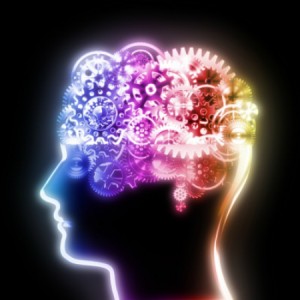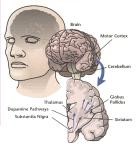The Need for Dementia Sensitive Primary Care
What was the Inspiration behind this post?
Last week I had a doctor’s appointment with my primary care doctor. It was a 3 pm appointment. Here it was almost 4 pm and I was just getting called. When my doctor saw me, she immediately apologized and told me the reason for the delay. She said that today many of her patients had dementia, and those appointments take longer than the other appointments, yet they are scheduled for the same amount of time. My doctor knows I work in senior living, so she felt comfortable telling me her feedback of her experience with dementia patients. My Doctor told me that she spends a large part of the appointment counseling her dementia patients and their families. She also told me, the most frustrating part of her appointments with those with dementia, is explaining to them, that there is little she can do medically to alleviate the symptoms caused by dementia. She said many family members for instance notice their loved one with dementia has suddenly lost weight, and they want a prescription to combat that. She then has to give them the disappointing news that weight loss caused by dementia is a comprehensive symptom and can’t be fixed over night with a prescription. Needless to say, she was very excited to hear about Orchard’s Brand New 4 Tier Nutrition Therapy Program coming in 2018. For more information about Nutrition Therapy for Dementia please visit: http://stage-osl.daveminotti.com/final-stages-of-nutrition-therapy-development-for-dementia-residents/, as well as http://stage-osl.daveminotti.com/nutrition-therapy-at-each-level-of-dementia-care/
What Does Dementia Sensitive Primary Care Mean?
Dementia Sensitive Primary Care, are primary care services that are provided solely to individuals living with dementia. These services are provided by professionals that specialize in dementia, and in many cases only treat those with dementia. This type of care can be provided in a clinic or by a mobile service, by a medical professional ranging from a Nurse Practitioner to a Doctor. This clinic and or professional is designed to replace a person’s primary care provider that they had prior to the dementia.
What is an Example of Dementia Sensitive Primary Care Center?
The Integrated Memory Care Clinic, located in Atlanta, is a nationally-recognized patient-centered clinic that provides primary care for someone living with dementia. The clinic provides a variety of services to meet the challenging needs of those living with dementia. Whether the patient living with dementia has a cold, needs a vaccine, or has a change in behavior, the clinic can help. Dementia and other chronic conditions are managed exclusively by nurse practitioners who collaborate with geriatricians and neurologists on the team. The nurse practitioners have advanced training and specializations in dementia, geriatrics, and palliative care. A clinical social worker is also a vital member of the team. I personally know people that are patients at The Integrated Memory Care Clinic, and I know some of the professionals that manage it. I can say this clinic does an absolutely amazing job, and I would recommend it to anyone who is looking for Dementia Sensitive Primary Care.
Can Dementia Sensitive Primary Care be done outside of a clinic?
The answer is yes. I personally work with several medical groups that provide concierge dementia sensitive care in a person’s home. They can go to someone’s home or to their community. The group I work with closest has a team of professionals that provide the care. Their team is made up of a Geriatric Psychiatrist, a Nurse Practitioner and a Doctor trained in dementia care, as well as an Occupational and Speech Therapist. These professionals work as a team to define the patient’s cognitive, functional and behavioral profile, and create a care plan to manage their care. The extent to which each specific professional sees the patient depends on the patient’s needs and their profile. These services are offered in a person’s home, and at the Orchard, or another community.
Why do we need Dementia Sensitive Primary Care for those with Dementia?
Currently, 50-90% of all dementia gets misdiagnosed or gets missed all together until a crisis happens. Even if Primary Care Professionals start to more accurately recognize dementia, the quality of management of the disease after the diagnosis is usually sub optimal. Even if a PCP can diagnose dementia, in many cases they do not have a plan for follow up management. After dementia is diagnosed, there needs to be a plan of care set up to address potentially starting dementia-specific drug treatment to slow the decline, assessment and management of Behavioral and Psychological Symptoms of Dementia (BPSD), safety issues in and out of the home, side effects of psychotropic drugs, as well as the stress of family care givers. Most Primary Care Professionals today are not equipped to provide follow up dementia care. These PCPs are missing the coordination of primary healthcare partners, as well as the implementation of support for both people with dementia and their caregivers. Hopefully in the next few years, more Integrated Memory Care Clinics will spring up, and more people with dementia will receive the Dementia Sensitive Primary Care they need.
as well as the implementation of support for both people with dementia and their caregivers. Hopefully in the next few years, more Integrated Memory Care Clinics will spring up, and more people with dementia will receive the Dementia Sensitive Primary Care they need.





 About 60,000 Americans are diagnosed with Parkinson’s disease each year. The disease strikes more men than women. The average age of onset is 60 years, and the risk of developing the disease increases with age. Parkinson’s disease is also more common in developed countries, possibly because of increased exposure to pesticides or other environmental toxins
About 60,000 Americans are diagnosed with Parkinson’s disease each year. The disease strikes more men than women. The average age of onset is 60 years, and the risk of developing the disease increases with age. Parkinson’s disease is also more common in developed countries, possibly because of increased exposure to pesticides or other environmental toxins
